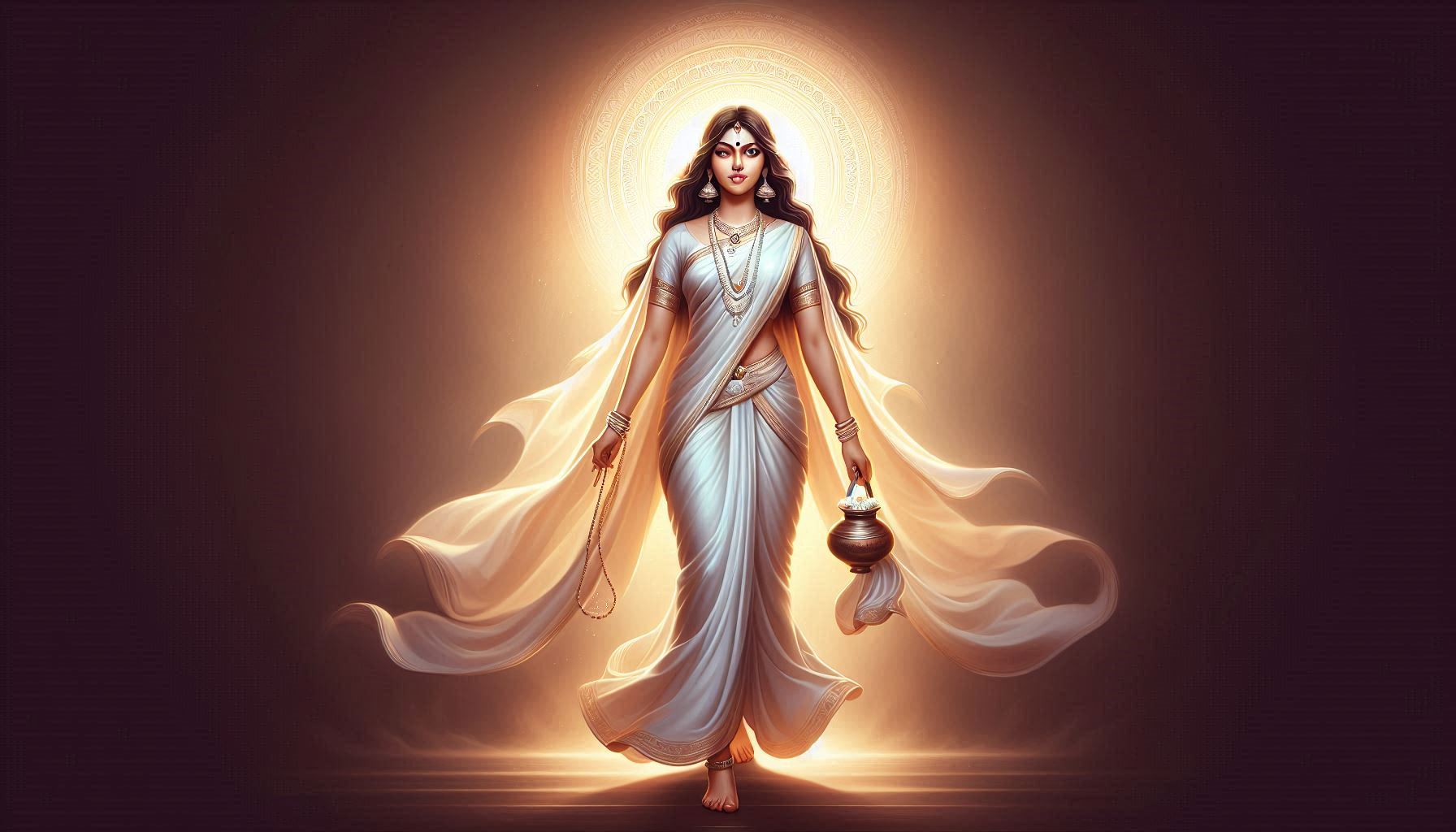
On the second day of Navratri, devotees worship the second form of Goddess Durga, Maa Brahmacharini. Her name signifies her ascetic form, where “Brahma” means penance or meditation, and “Charini” means one who practices it. Maa Brahmacharini performed severe penance to attain Lord Shiva as her husband. In this form, she is depicted wearing white clothes, holding a rosary in one hand and a kamandalu (water pot) in the other.
The Appearance of Maa Brahmacharini
- Attire: Maa Brahmacharini wears white garments, symbolizing peace and purity.
- Rosary in Hand: The rosary signifies devotion and meditation.
- Kamandalu in Hand: The kamandalu represents renunciation and penance, showing that she renounced worldly attachments.
Significance of Maa Brahmacharini
- Symbol of Penance and Devotion – Maa Brahmacharini represents intense penance and devotion. She performed severe austerities to attain Lord Shiva as her consort.
- Inspiration for Patience and Discipline – Worshiping her instills patience, self-control, and discipline in devotees.
- Blessings of Knowledge and Wisdom – With her grace, one attains knowledge, wisdom, and self-awareness.
- Protection from Difficulties – Devotees going through hardships find solace and support in Maa Brahmacharini’s worship.
- Spiritual Growth – Her devotion leads the seeker toward spiritual progress and the path of truth.
The Story of Maa Brahmacharini
According to mythology, in her previous birth, Maa Brahmacharini was Goddess Sati, who immolated herself in the fire of her father Daksha's Yajna. In her next birth, she was born as Parvati, the daughter of the Himalayas. To get Lord Shiva as her husband, she undertook rigorous penance. She meditated for thousands of years, sustaining herself on fruits and then fasting entirely. Due to her intense penance, she is known as “Brahmacharini.” Eventually, she attained divine knowledge and married Lord Shiva.
Worship of Maa Brahmacharini
- Morning Bath and Clean Clothes: Start the day by taking a bath and wearing clean clothes. Keep your worship area clean.
- Kalash Sthapana (Establishment of the Sacred Pot): Light a ghee lamp in front of Maa Brahmacharini's idol or image.
- White Flowers and Rice: Offer white flowers, rice, and holy water (Ganga Jal) during the worship.
- Dhyana Mantra: Invoke Maa Brahmacharini by reciting her Dhyana Mantra and meditate on her form.
- Chanting of Mantras: Recite the mantra “Om Devi Brahmacharinyai Namah” to please the goddess.
- Offer Flowers and Prasad: Offer white flowers and sweets like sugar or mishri (rock sugar) as prasad.
- Aarti: Conclude the puja with the Aarti of Maa Brahmacharini and distribute prasad among family members and devotees.
Maa Brahmacharini’s Dhyana Mantra
Dadhana Karapadmaabhyamakshamala Kamandalu,
Devi Prasidatu Mayi Brahmacharinyanuttama.
Maa Brahmacharini’s Stotra
Ya Devi Sarvabhuteshu Maa Brahmacharini Rupena Sansthita,
Namastasyai Namastasyai Namastasyai Namo Namah.
Maa Brahmacharini’s Mool Mantra
Om Devi Brahmacharinyai Namah.
Purpose and Benefits of Worship
- Worshiping Maa Brahmacharini inspires the devotee with discipline, self-restraint, and the spirit of sacrifice.
- Her blessings increase patience, determination, and strength to endure hardships in life.
- Devotees attain spiritual power, self-confidence, and success on the path of devotion.
- Maa Brahmacharini’s grace helps eliminate difficulties and obstacles from life.
Aarti of Maa Brahmacharini
Fruits of Worshiping Maa Brahmacharini
By worshiping Maa Brahmacharini on the second day of Navratri, devotees develop patience, endurance, and mental strength. Her blessings bring self-discipline, self-confidence, and spiritual wisdom to life. The worship of Maa Brahmacharini awakens the Swadhisthana Chakra (sacral chakra), which enhances creativity, emotional balance, and inner strength.
















